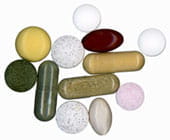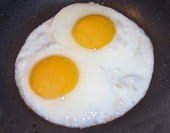When it comes to bodybuilding things are no different we want results ASAP. The desire to build a better body unites all bodybuilding and fitness enthusiasts, but for most of us, the muscle gains come too slow and they never come easy. So we look for shortcuts. Is the secret to fast muscle gains training harder, lifting heavier, eating more, popping this pill, or slugging back the latest hyped up magic muscle drink…
In this article we are going to dive into 5 of the most common workout "shortcuts" that people take and pick them apart to find a better plan of action. More often then not the best methods for building a stronger and more muscular physique involve a less extreme approach.
Shortcut # 1 – Training More Often
A lot of times aspiring bodybuilders think they are not training enough and fall into the more is better mentality. After all more workouts must mean more muscle, Right?
It is not uncommon to find less experienced (but over enthusiastic) bodybuilders to start spending more and more time in the gym. Daily workouts become the norm and the length of those workouts gradually gets longer and longer. They usually think they are doing themselves good, and sometimes even brag about how they workout "everyday".
Is there a better way?
Your body can only recover and grow so fast. Training a muscle again before you have fully recovered from your previous workout will eventually lead to overtraining. Generally the most you can train a bodypart is twice per week and still recover and grow.
While there are some exceptions to this rule with some abbreviated specialization routines (i.e. the Blast Your Bench program). You should limit yourself to working each bodypart no more then twice per week and taking at least 2 days per week off from weight training entirely as this is a good general guideline to follow for optimal muscle gains.
Shortcut # 2 – Doing More Sets
Making the transition from a beginner, to intermediate, to an advanced lifter usually involves increasing your workout training volume to some extent. The better shape you are in physically, the higher your work capacity, and the more volume of training you can handle.
For example, a beginner workout may consist of 6 sets per bodypart (i.e. 3 sets of 2 exercises). An intermediate workout may consist of 9 sets per bodypart (i.e. 3 sets of 3 exercises). And an advanced workout may consist of 12 sets per bodypart (i.e. 3 sets of 4 exercises). While this is all good general training advice, it breeds the "more is better" mentality. After all no one wants to be a newbie for long so they jack up the training volume too much, too soon.
Another problem with this train of thought is that if 12 sets per bodypart are good for an advanced lifter, will more sets be even better? How about 15 sets, or 20 sets, and beyond… Will this make me a "super advanced lifter"…?
Is there a better way?
Generally it takes at least 3 years of training to progress from the beginner, to the intermediate, and on to the advanced levels of training. Once you reach the advanced levels adding more sets and training volume beyond this is often counterproductive.
While there is no hard set rules for exactly how much training volume you should do, there are some general guidelines that you can follow. 9 sets per workout should be adequate for smaller muscle groups like biceps, triceps, calfs, and abs. And around 12 sets per workout will be enough for larger muscle groups like chest, back, and thighs.
Once you are at the advanced training level the key to more muscle growth is using progressive overload (gradually increasing your weights over time) and by adding variety to your workouts, by changing your exercises. NOT from adding more training volume.
Shortcut # 3 – Training Less Often
The world of bodybuilding is full of extremes, for a lot of guys it is either all or none… there is no middle ground. So after learning about the negative impacts of training too often, as outlined above, many bodybuilders make a complete U-turn and go the opposite direction and drastically cut back on their workouts figuring that "less is more".
Some experts have gone over the deep end with the fear of overtraining. Mike Mentzer and his Heavy Duty style workouts were one of the biggest influences of the "less is more" idea. Overall the basic principles of this workout were good because it implemented a solid plan of action, used progressive overload, monitored your progress, etc.
But one major flaw of the system was that if you weren't making progress with your workouts it was automatically assumed that you were "overtraining", so your workouts were cut back. Sometimes going to the point of working out once a week or less. In fact there is some fitness gurus who actually preach that you only need to workout once a month…?!?
Is there a better way?
For some extremely hardgainers training less often (i.e. every second day) may be the best frequency for muscle gains. But most people will respond well to more frequent workouts (i.e. 2 days on, 1 day off).
There are no hard set in stone rules that work for everyone, but a general guideline of working out 4-5 times per week and training each bodypart twice per week is a good place to start. As you get more experienced you be able to find out exactly what your body responds the best to and customize your workouts to fit your specific needs.
Shortcut # 4 – Heavy Weights & Low Reps
One of the basic bodybuilding principles is a bigger muscle is a stronger muscle. So in order to get bigger, you need to get stronger. Progressive overload is the cornerstone of all successful workouts. You need to gradually increase the weights you are lifting over time in order to make progress.
During the early phases of a starting a workout program beginners can make fast gains because all training stimulus is new at this stage. And a lot of the initial strength gains come not only from increasing muscle strength, but also from improved lifting technique and better coordination.
But once you get past the initial beginners phase, your strength gains come more slowly. When this happens a lot of lifters will simply do fewer reps so they can continue to increase the weights.
For example, if I can lift 100 lbs. for 10 reps, maybe I could drop the reps to 8 and lift 120 lbs., or drop the reps to 6 and lift 140 lbs., etc… While this may work to some degree initially to get you growing again, there comes a point where it can back fire and bring your gains to a screeching halt.
Is there a better way?
Lifting heavier weights for lower reps increases your odds of getting an injury such as a muscle tear. When you are doing fewer then 5 reps per set you lose the mind muscle connection. The lift becomes an end in itself and no longer a means for building muscle. Lifting too heavy makes it harder to concentrate on the muscles you are working, your focus switches to simply moving the weight and not getting crushed under a heavy barbell.
While you can successfully incorporate low rep training cycles into your workouts from time to time. They shouldn't be your primary focus. For bodybuilding purposes try to stay within the 6-12 rep range. This is the "sweet spot" for keeping your muscles under tension long enough to stimulate growth, while still allowing relatively heavy weights to be lifted.
Shortcut # 5 – High Intensity Techniques
A lot of hardgainers think the key to making faster gains in the gym is to simply work harder. So they increase the intensity of their workouts with various advanced training techniques such as forced reps, super sets, drop sets, and so on… Thinking that the harder they push themselves, the better gains they'll make. While these guys certainly deserve an A for effort, is pushing past the point of muscular failure really necessary?
Is there a better way?
One of my favorite training motto's is "Stimulate, Don't Annihilate!"
For the average drug free lifter using advanced training techniques and pushing yourself to the limit will quickly lead to burnout, overtraining, and possibly injury.
A very common mistake that you can witness pretty much any day of the week in the gym is to see a couple of eager young lifters doing bench presses with WAAAYYY too much weight on the bar. One guy will be getting ready to bench while his trusty spotter is standing by ready to assist the lift. After getting psyched up the lifter plops down on the bench and takes the bar from the rack, he manages to struggle up 2-3 reps using piss poor form and every ounce of effort his body can muster. Then he gets his spotter to assist him with an addition 3-5 reps.
At the end of the set you wonder who worked the hardest, the guy benching or his buddy pulling the bar off his chest…?
This is a prime example of abusing high intensity techniques. Once you reach failure with an exercise you have stimulated the muscle. Doing more then this is often not only waste of time, but could potentially set you back in your training through risk of injury.
I rarely, if ever, use any type of set extending high intensity techniques like forced reps in my training anymore. I've found that they are just not necessary. Doing your sets to positive failure is intense enough to stimulate your muscles to grow.
Once you reach failure, make note of it in your training journal and then strive to beat what you did for your next workout by either adding an additional 5 lbs. to the bar or doing an extra rep with the same weight. Using progressive overload like this will ensure that you constantly push yourself to make steady strength and muscle gains.
The Real Shortcut To Fast Muscle Growth
Gains in muscle and strength don't come overnight. They take consistency over the long term. By taking things at a manageable pace and making small frequent improvements week after week with your workouts your muscle size will increase faster then you ever thought possible… without having to go to the extremes to get there.
Inch by inch life's a synch… Yard by yard life is hard…
If one of your goals is to build a big, strong, muscular body then be sure to check out the Blast Your Bench website and sign up for the FREE 5-Part Bench Press Training Tips e-Course. In this free course you'll get some killer tips and tricks for packing on lean muscle mass and dramatically increasing your strength in record time!


 And here's where it gets even more interesting…
And here's where it gets even more interesting…

 Mistake #4: Bad form.
Mistake #4: Bad form. The Split
The Split